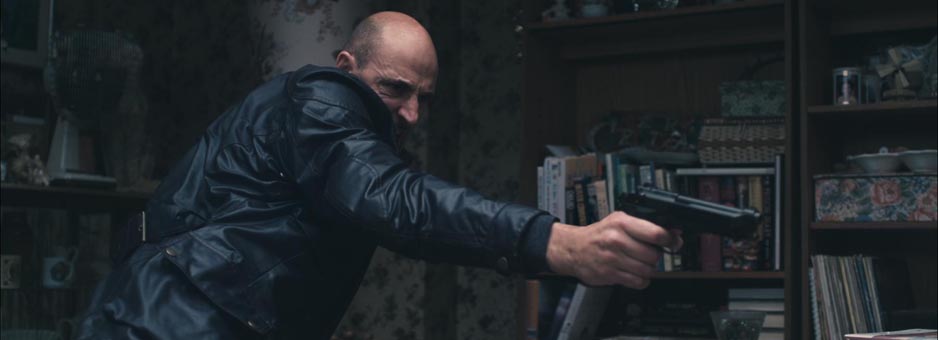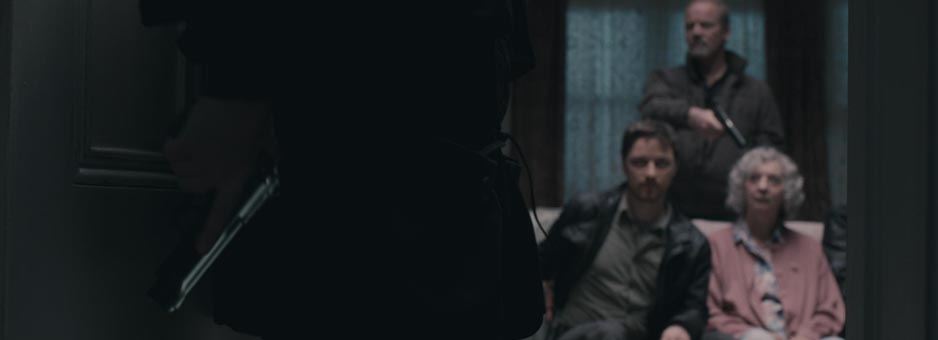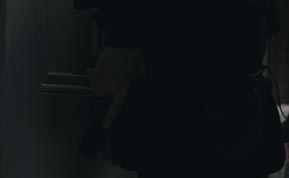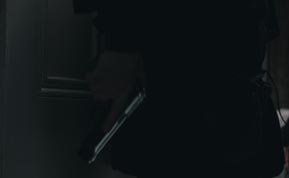- Panzehir
- Double Xposure
- Ram-Leela
- Ilo Ilo
- Elysium
- Welcome to the Punch
- Pacific Rim
- Bad Parents
- Archive


Molinare Grades ‘Welcome to the Punch’
FilmLight talks to senior colourist at Molinare, Asa Shoul, about the process of grading Welcome to the Punch. He explains the challenges of working with a limited colour palette and how FilmLight’s Baselight helped to achieve the desired look so quickly.
Welcome To The Punch is the story of an Icelandic criminal who comes out of hiding in an effort to save his son when a heist goes wrong. London detective Max Lewinsk, played by James McAvoy, jumps at the chance to take down the man who has always evaded him.
Molinare is a leading film and broadcast post-production facility in the heart of Soho and, with nearly 40 years of experience, is one of the most respected names in the industry. The Molinare team provided the full picture post-production on this highly anticipated thriller, with Asa Shoul grading the feature in Molinare’s luxury DI theatre on a Baselight EIGHT system.
The film, which was written and directed by BAFTA nominated Eran Creevy, was shot predominantly at night or in low levels of daylight on the ProRes ARRI Alexa. Eran and the DoP, Ed Wild, wanted to create a slick, glossy, high-contrast look that wouldn't age. To achieve this they used a Storm Blue filter in the camera and maintained a simple palette of grey and blue with very little artwork or varying colours throughout the movie.
“Working with such a specific palette of colours can be challenging as you run the risk of the film looking too similar and washed out, which can become overpowering for the audience”, said Asa. “I had to work carefully to strike the right balance between creating a strong and unique look, and one that wasn’t too obviously over-worked or over-graded.”
Asa was aware that the limited colour palette could become quite monotonous, so to counteract this, he created a very high-contrast look. The ARRI Alexa had a key part to play in this as the lack of grain and noise in the image allowed him to push the contrast more than he would have with film.
“We were grading a lot of night time shots with high shadow detail,” said Asa. “We wanted a high contrast image but we also wanted to retain the detail in the shadows. It was fascinating to see how much detail we could pull from the Alexa and we’ve been really impressed by its lack of noise. This, coupled with Baselight’s highlight and shadow pivot tools, really helped us to preserve the detail and create the ‘neon noir’ look that the director wanted.”
After the film had been shot ProRes, it was converted to DPX to use with Baselight. It was also conformed on Baselight, which allowed the team to use the multi-paste functionality to update re-cut reels with no need to wait for the edit suite to publish cuts.
“There were cut changes and multiple visual effects coming in and being completed overnight in the background,” said Asa. “ This is great because it means no one has to stop me working to put effects in – they simply phone me up when they’re completed and I can see everything with date markers beside the updates. All this speeds up the process fantastically and means we’re not sitting around waiting for stuff to happen.”
The speed and functionality of Baselight also played a key part in creating the desired look for the film. One particular challenge Asa had to overcome was the process of de-saturating James McAvoy's beard.
“If the light had hit the beard during the shoot, it would appear as a very strong red,” said Asa. “In order to maintain the blue/green colour palette, we needed to de-saturate it as much as possible. To do this, I keyed and tracked shapes from one scene to another using Baselight. The hair was very fine so I worked from a very fine keyer as I didn't want to affect the skin tone. Baselight made the process extremely simple, and we managed to do it with no problems at all.”
In one particular scene towards the end of the film the audience sees a man shield a gun behind his back and then move to place it in his pocket. However, as the original shot was so dark it was impossible to see the weapon at all. To rectify this, Asa relied on Baselight's compositing toolkit.
“I found an image of the gun in another scene and managed to composite it into the shot,” said Asa. “I remember the director was completely blown away, as it was a really crucial part of the scene. It was also a huge time-saver and saved the client the cost of having to take it to an effects house and have a compositing artist do it.”
 |
 |
Before |
After |
“Baselight is by far the fastest grading system I’ve ever worked on,” comments Asa. “The system is so intuitive and well-designed that everything is at your fingertips. A lot of other systems work with multiple drop-down menus, which means whenever you want something you have to find it, switch it on and adjust it. With Baselight you can have nine different cursors in different positions to compare shots. You can drag and drop grades or particular looks from galleries and it’s so incredibly fast.”
As the team created a high contrast and shadowy look for the film, they also needed to lift a lot of the eye detail. Asa completed this using Baselight’s area and shape tracker and was covering 50 sets of eyes in just 10 minutes – something that may have taken close to a day to complete on another system.
“Another feature I love about Baselight is that it keeps on evolving. Every time I grade I find another tool, or a new way of doing something that saves me time. All of these things mean I have more time to be creative. And, as a colourist, you want to be able to have fun and try out new things. As Baselight is so powerful and fast, you don’t need to feel pressured or hold back choices from your clients. You can give them every option and feel confident you can achieve the results, whatever it is.”
Molinare credits include: The King’s Speech, I Give it a Year, Kick-Ass 2, The Selfish Giant, Quartet, All Things To All Men, Grabbers, The Hour, Flying Monsters 3D, Call the Midwife, Silent Witness, Dracula and more.
“Baselight is by far the fastest grading system I’ve ever worked on. The system is so well-designed that everything is at your fingertips. ”
Download
Welcome to the Punch Case Study (PDF)



